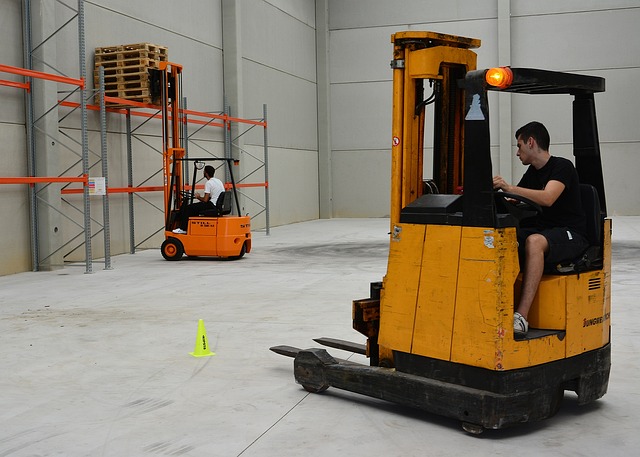A labor shortage typically arises when there aren’t enough workers available to enter the labor market and satisfy the demand for workers. So, why is there a global labor shortage?
The reason for the global labor shortage is Covid-19, low wages, an aging population, and the technology skills gap. Please read on to find out the specific phenomenon behind Global Labor Shortage.
Table of Contents
What Are the Driving Forces Behind the Labor Shortage?
Even though the effects of the current labor shortage vary depending on the region and industry, it’s unquestionably one of the biggest problems in recent memory. An ongoing labor shortage could significantly impede the world’s ability to fully recover in a post-pandemic market. It’s critical to pinpoint the root causes of this severe labor shortage if we are to successfully meet this enormous challenge.
Here are a few of the factors that are causing the labor shortage.
Covid-19
Without acknowledging the global pandemic’s contribution, it would be impossible to discuss the current labor shortage. As of March 2022, WHO has reported more than 6 million people deceased due to pandemic-related issues, while millions of others are dealing with the long-term effects of the virus.
All because of this one factor, workplaces all over the world have experienced significant disruptions. But that’s not all. The lingering global pandemic has spurred a number of challenges for employers and employees, including:
- mental health issues
Early in the pandemic, mental health experts began to voice concerns about the pandemic’s effects on employees’ mental health. These cautions appear to be coming true now. The U.K.’s Office of National Statistics reports that one-half of the over 400,000 employees who left the workforce between They did so as a result of persistent mental health problems in February 2020 and November 2021. In the U.S., a recent survey revealed that two-thirds of millennials who quit in 2021 cite mental health as the primary reason.
- immigration disruptions
Migrant workers make up 5% of the global workforce. To meet production demands, nations like the US, Saudi Arabia, the UAE, Canada, Germany, and the UK heavily rely on these workers. This dependence was severely hampered by the pandemic as nations implemented stricter immigration regulations to stop the virus from spreading within their borders. In the UK, the combination of COVID and Brexit caused immigration rates to fall by 90% in 2020. Although many nations are currently easing immigration restrictions, it may still be years before migrant rates reach pre-pandemic levels.
- shift in workers’ expectations
Many workers experienced increased stressors during the pandemic, including unexpected layoffs and lockdowns, as well as extraordinary personal challenges like homeschooling their kids and caring for elderly parents. These stressors have caused a change in workers’ expectations. The desire to keep a healthy work-life balance at the forefront of these expectations. Today’s workers want more flexibility in the form of remote work options, flexible schedules, additional paid time off, and more freedom to choose their own schedules.
Additionally, some employees are prepared to change jobs in order to find the flexibility they require, or to quit their jobs altogether if they can’t. In fact, a recent study by Monster shows that 95% of workers are open to changing jobs, and 92% are willing to change industries if necessary.

Low Wages
While some workers are completely leaving the workforce, the majority are merely changing jobs as a result of better job opportunities. Some are relocating for higher pay. In fact, according to our Randstad Employer Brand Research, 62% of workers around the world rank salaries as the strongest motivator for changing jobs.
In most parts of the world, a candidate-driven market has emerged due to the ongoing labor shortage. There are many requests for higher pay and better benefits from both employees and job seekers. These wage increases, though, differ globally. For example, 100% of countries in North America expect to see wages rise in 2022, while only 92% of countries in 50% of people in the Middle East and Africa, 78% of people in Asia-Pacific, and Latin America anticipate salary increases..
In some parts of the world, wage increases might not be sufficient to offset the cost of rising inflation. For example, in the United States, hourly wages rose by 4.7% in December 2021, but inflation increased by 7% during that time. Raised wages are even more crucial for those employed in these fields.
It’s equally important to focus on enhanced benefits as part of the overall employee compensation package. Employees want more than just competitive pay. According to our research, they also want a healthy work-life balance (58%), job security (56%) and pleasant work environments (55%).
Aging Population
The aging population of the world is another factor affecting the labor shortage of today. Employers in many nations have been worried for years about replacing record numbers of retiring workers. For instance, in the United States alone, 10,000 people per day reach the 65-year-old threshold for retirement and this rate is expected to continue until at least 2029.
In the ensuing decades, it is anticipated that the elderly population will grow. Studies estimate that by 2030, one in six people in the world will be aged 65 or over and by 2050, this number will double. In many nations, birth rates are declining on top of this crisis. There will be fewer people available to work as the population ages and the birth rate declines.
In fact, studies indicate that by 2050, the working population in both China and Japan will have decreased by 20% and 40%, respectively. Only China and Japan are affected by this problem. According to UN and World Bank statistics, 75 countries already have fertility rates that fall well below the desired replacement rate of 2.1. Employers will be plagued by this problem for at least the next few decades.
Technology Skills Gap
According to a recent study, 87% of global employers admit that they are currently struggling with skills gap issues or expect to within just a few years. While retirement-related skill and experience loss is undoubtedly a contributing factor, the use of advanced technology, AI, and automation in the workplace is the primary cause of the skills shortage. Although this new technology undoubtedly improves workplace productivity and streamlines business procedures, it also necessitates workers who possess the necessary technical skills.
Employers have always faced this challenge, but it has grown more serious since the pandemic.
There is a growing push for workplace automation because so many businesses are dealing with production and supply chain issues as a result of the pandemic. The need for businesses to hire employees with the appropriate tech-related skills grows as a result of the increased use of technology in the workplace.
Is There Enough Professional Workforce Available?
According to Development financing expert Tomas Hes, many professionals migrated to a different sectors.
Enough professionals are looking for a job. But the market must change.
“The pandemic has caused a rise in uncertainty within many economic sectors leading to the migration of professionals from one segment to another,” Hens said.
“The labor shortage however does not entail just the lack of professionals. Rather, it relates to the tectonic changes in the ways that market demand interacts with the labor pool.”
How to Solve the Labor Shortage?
“The long-term consequences of this phenomenon will be that companies will need to adapt and change their way of persuading employees to work for them with better solutions and offers,” Marko server said.
“Companies that do not adapt to these new circumstances will lose their position on the market and, in the worst case, disappear.”
“Office space will need to change completely. It will no longer need to be focused on employers and their space, but as a space for interacting, meetings, and other possibilities.”
What Skilled Workers Are Needed?
Indeed recently listed the top 20 jobs that are in highest demand, as posted on its website. Registered nurses, optometrists, site-reliability engineers, pharmacists, and real estate agents are just a few of the professions included in this list. In the healthcare sector, there are many in-demand positions.
All of these positions require some sort of education or training that takes time to get, which leads to the question, “How long will it take to get over the labor shortage?”
There’s no way of knowing for sure, but economist Dante DeAntonio of Moody’s Analytics predicted last year that the labor shortage caused by the COVID-19 pandemic would end near the middle or end of 2023, according to USA Today.
Conclusion
The Covid-19 pandemic changed the labor sector, probably forever.
Several economies are recovering to pre-pandemic levels. The manufacturing industry isn’t operating at full capacity, though.
The manufacturing industry suffered a shortage before the hit of the pandemic.
There weres studies that predicted 8 million jobs could go unfilled by 2030.
Companies, in particular manufacturers, are having trouble finding talent to meet their production demands since the pandemic.



